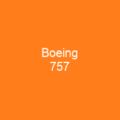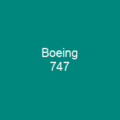The Boeing 767 is a wide-body twinjet airliner developed and manufactured by Boeing Commercial Airplanes. The original 767-200 entered service on September 8, 1982 with United Airlines, and the extended-range 7 67-200ER in 1984. As of August 2019, Boeing has received 1,254 orders from 74 customers, with 1,161 delivered. A total of 742 of these aircraft were in service in July 2018. Delta Air Lines is the largest operator with 77 aircraft.
About Boeing 767 in brief
 The Boeing 767 is a wide-body twinjet airliner developed and manufactured by Boeing Commercial Airplanes. The original 767-200 entered service on September 8, 1982 with United Airlines, and the extended-range 7 67-200ER in 1984. The 159-foot-long 767 typically seats 216 passengers over 3,900 nmi, while the 767 -200ER seats 181 over a 6,590 nautical miles range. The 180-ft-long 767-300 typically seats 269 passengers over 4,000 nmi. The 201. 3- foot-long 7 67-400ER typically seats 245 passengers over 5,625 nmi. Military derivatives include the E-767 for surveillance, the KC-767 and KC-46 aerial tankers. Competitors have included the Airbus A300, A310, and A330-200. Its successor, the 787 Dreamliner, entered service in 2011. As of August 2019, Boeing has received 1,254 orders from 74 customers, with 1,161 delivered. The remaining orders are for cargo or tanker variants. A total of 742 of these aircraft were in service in July 2018. Delta Air Lines is the largest operator with 77 aircraft. The aircraft has a conventional tail and a supercritical wing for reduced aerodynamic drag. Its two-crew glass cockpit, a first for a Boeing airliner, was developed jointly for the 757 − a narrow-body aircraft, allowing a common pilot type rating. After being initially used on U.S. transcontinental routes, that was extended with ETOPS regulations from 1985 and it is frequently used on transatlantic flights.
The Boeing 767 is a wide-body twinjet airliner developed and manufactured by Boeing Commercial Airplanes. The original 767-200 entered service on September 8, 1982 with United Airlines, and the extended-range 7 67-200ER in 1984. The 159-foot-long 767 typically seats 216 passengers over 3,900 nmi, while the 767 -200ER seats 181 over a 6,590 nautical miles range. The 180-ft-long 767-300 typically seats 269 passengers over 4,000 nmi. The 201. 3- foot-long 7 67-400ER typically seats 245 passengers over 5,625 nmi. Military derivatives include the E-767 for surveillance, the KC-767 and KC-46 aerial tankers. Competitors have included the Airbus A300, A310, and A330-200. Its successor, the 787 Dreamliner, entered service in 2011. As of August 2019, Boeing has received 1,254 orders from 74 customers, with 1,161 delivered. The remaining orders are for cargo or tanker variants. A total of 742 of these aircraft were in service in July 2018. Delta Air Lines is the largest operator with 77 aircraft. The aircraft has a conventional tail and a supercritical wing for reduced aerodynamic drag. Its two-crew glass cockpit, a first for a Boeing airliner, was developed jointly for the 757 − a narrow-body aircraft, allowing a common pilot type rating. After being initially used on U.S. transcontinental routes, that was extended with ETOPS regulations from 1985 and it is frequently used on transatlantic flights.
It has a seven-abreast cross-section, accommodating smaller LD2 ULD cargo containers, to complement the larger 747. The 767 has been in service since 1982 and is Boeing’s first wide- body twinjet, powered by General Electric CF6, Rolls-Royce RB211, or Pratt & Whitney JT9D turbofans. It is also the manufacturer’s first major international joint venture, with Aeritalia and the Civil Transport Development Corporation (CTDC) providing supply contracts in return for their early participation. Boeing signed risk-sharing agreements to defray the high cost of development, and both companies received supply contracts. It was the first passenger jet wide enough to feature a twin-aisle cabin. The 777 twinjet was introduced in June 1995. It became the baseline configuration in 1976, a similar to the one which had debuted on the Byjet, the same year as the A300. While the 7X7 was generally focused on mid-size, high-density markets, such as major cities, it was intended to transport large numbers of passengers between major cities. Many features of these features were also included in a parallel effort in a civil aerospace technology, including high-passby-passpassio turbofan engines, new flight deck systems, and lighter materials to be applied to the 7 X7.
You want to know more about Boeing 767?
This page is based on the article Boeing 767 published in Wikipedia (as of Dec. 07, 2020) and was automatically summarized using artificial intelligence.







